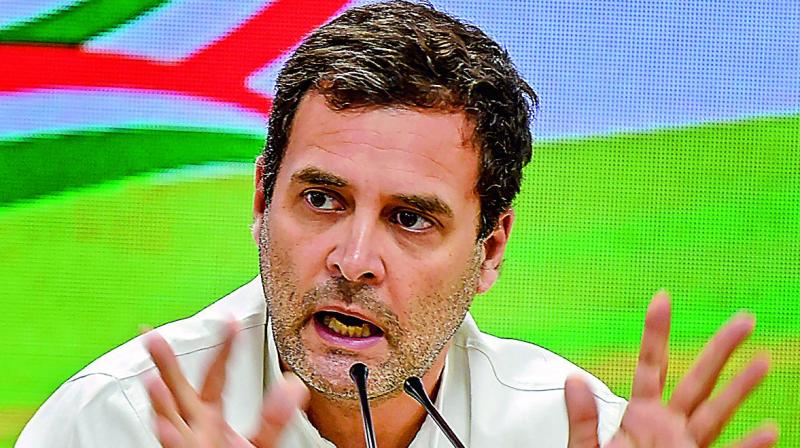Congress’ NYAY may be worth a closer look

The Congress Party’s minimum income scheme for the poorest one-fifth households in the country, announced by party president Rahul Gandhi on Monday, looks to be well worth exploring further. The scheme is to be a part of the Congress’ election manifesto.
Every scheme that entails an outgo from the treasury for the sake of helping people fight poverty can’t be dismissed as a “sop” or wasteful expenditure which doesn’t lead to the creation of assets. When the UPA-1 government gave out Rs 60,000 crores as loan waivers for badly indebted farmers, who are usually the victims of a faulty agricultural economy in which returns on investment for farmers are paltry, experts and neo-classical economists made harsh criticisms. But later evaluations showed this block of funds helped kickstart sections of industry as farmers, with the aid they got, entered the market for non-rural goods.
Under the Nyuntam Aay Yojana (NYAY), the Hindi acronym for the minimum income scheme, the poorest 20 per cent of households in India will get a flat sum of Rs 6,000 per month in their bank accounts, and the support will be available to households with incomes of less than Rs 12,000 per month. The succour provided can be a shot in the arm for five crore households, or about 25 crore individuals. It can help them with somewhat better nutrition, possibly chances of regular schooling that may lead to training for jobs. Higher incomes and deferred asset creation can accrue as benefits to the economic system as a whole, not just to the beneficiary families.
NYAY targets the poorest 20 per cent households, unlike the Universal Basic Income (UBI) Scheme under which every household, regardless of its existing income level, will be covered. This model has been tried in some countries like Finland, and was alluded to by former chief economic adviser Arvind Subramanian in the 2016-17 Economic Survey, fuelling a discussion on the merits of UBI.
But in the Indian context it may be more prudent to conserve public money by not extending income support even to those in higher income brackets, who have partial coverage, such as under NYAY. Practical difficulties pertaining to identifying the needy households with accuracy will no doubt arise, and also dealing with leakages from the system. But these may be overcome after the teething problems are sorted out. Perhaps it will be practical if some part of the expenditure in rolling out NYAY — which could be around Rs 3,00,000 crores, though proper calculations are yet to be disclosed — were met by rolling back some existing subsidies that are not delivering results for a variety of reasons.
On balance, it may be best not to be cynical about the efficacy of anti-poverty measures such as NYAY, provided the rollout is efficiently done.

